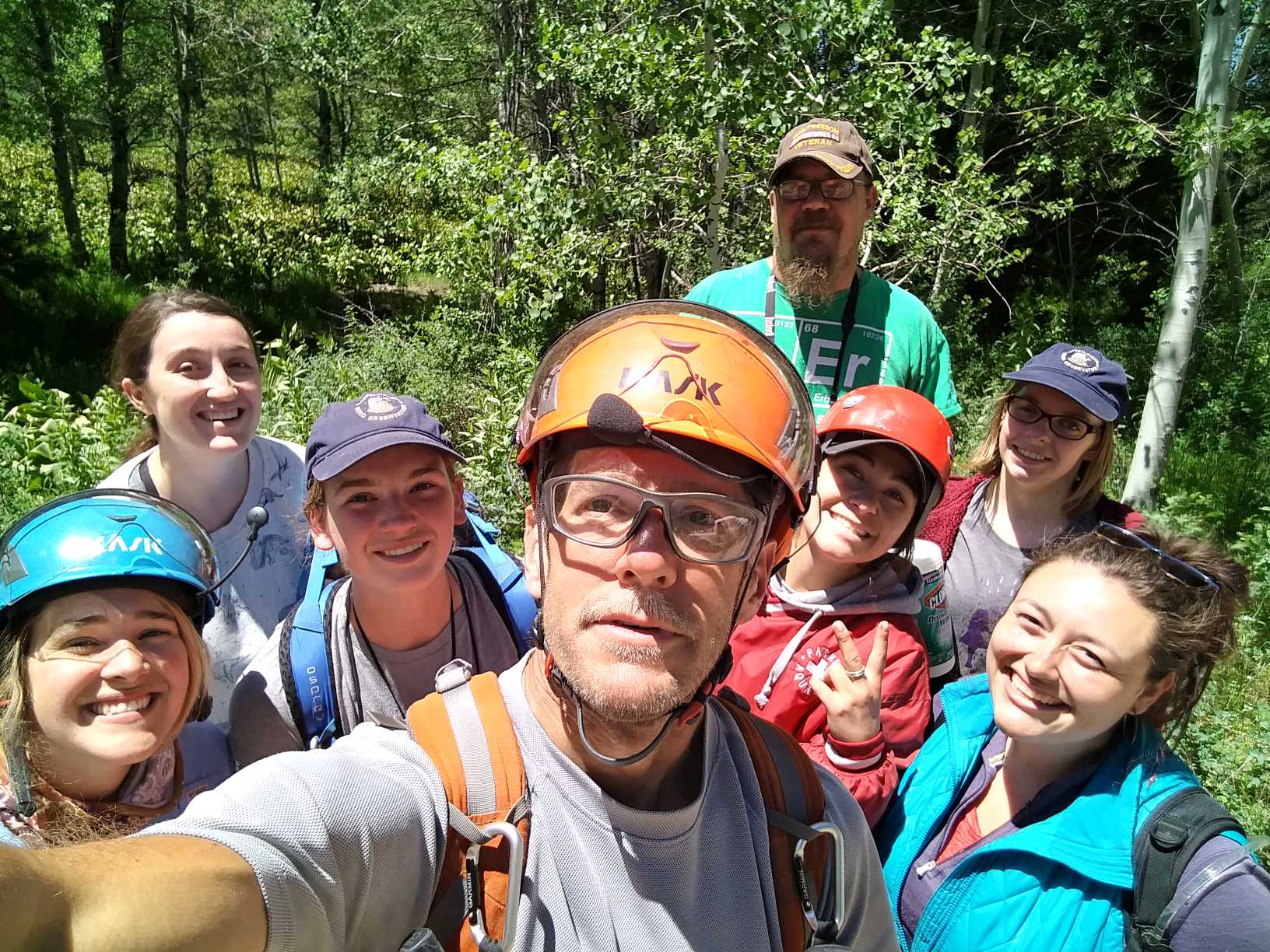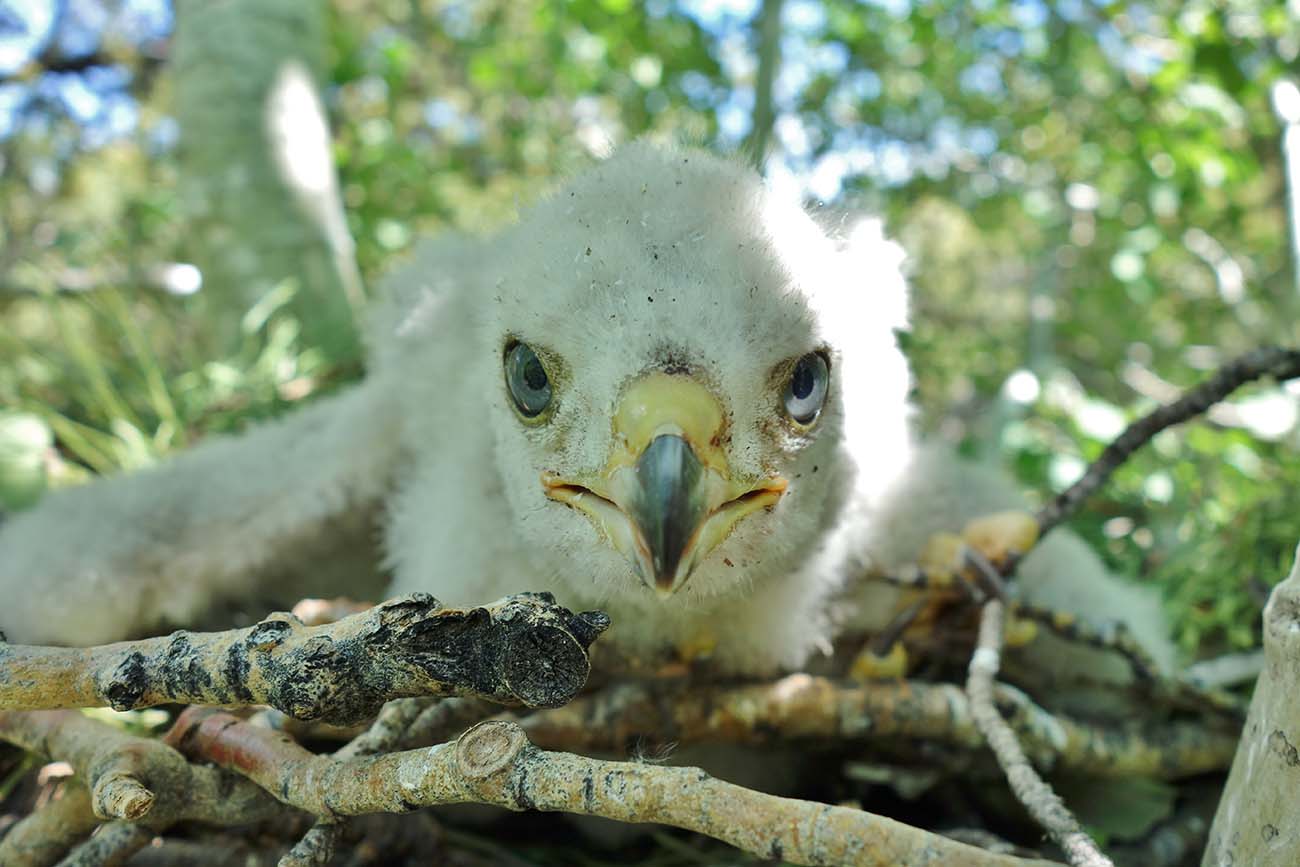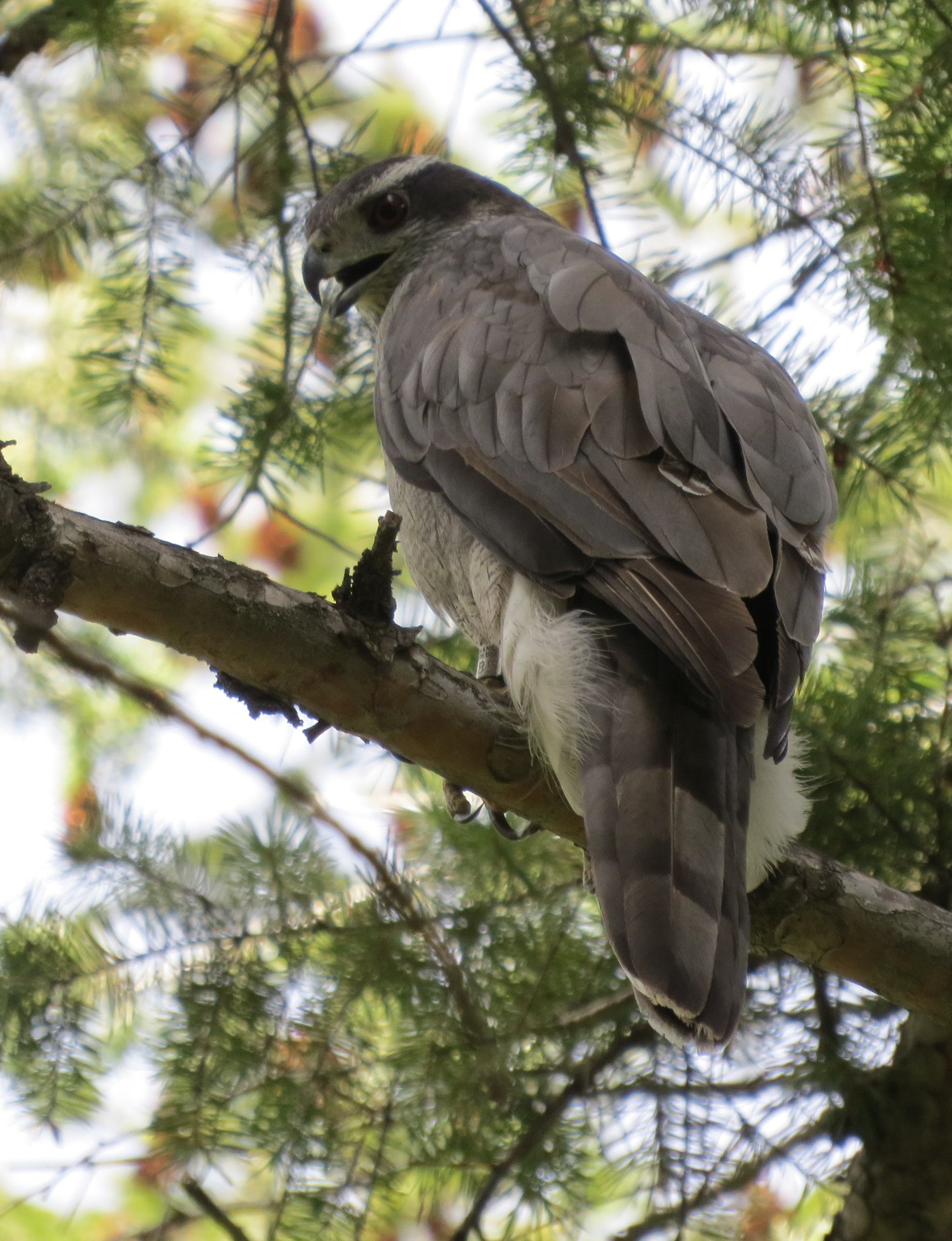By Robert Miller

This past season was shaping up to be a great one for Team Goshawk. With the return of our National Science Foundation Raptor Research Experience for Undergraduates (REU) program, we had extra funding and student capacity to address one of the bigger questions that has plagued us for a few years about the population we study – quantifying the post-fledging survival of young goshawks.
We have believed for some time that the survival in our study area is low as compared with other areas. We suspect that this may be caused by the lack of food shortly after the birds leave the nest, as their primary prey choice, ground squirrels, estivate (head back underground) around that time. Allyson Bangerter from Weber State University joined us to lead out on this project. Furthermore, we had been working with another student, Eliana Heiser on her independent research project analyzing prey choice as it relates to variations in adult goshawk size – i.e., do larger birds hunt larger prey. With these two projects loaded on top of our standard long-term monitoring activities, we were going to be busy in the field!
There was just one problem…the goshawks didn’t show up to breed.
This season presented the lowest rate of breeding by goshawks that we have ever measured in the study area. With more than 20 years of data, this was a big deal. Not only that, but for those that did breed, productivity was low. With such a small group of breeders, with few young per nest, we made the difficult decision to decrease our research disturbance by cancelling our two student projects. It was an ethical dilemma. Why impact a population that is already under significant stress to end up with a sample size that is too small to draw research conclusions? We made the tough decision to walk away.

From the student’s perspective, this was very bad news. They had worked hard to develop their research proposals, building enthusiasm along the way. What would they have to show for their work?
However, from a long-term program perspective, this presented an opportunity.
We typically learn the most from anomalies in the data. This phenomenon wasn’t limited to our study area, nearly every forest in the Intermountain West measured similarly poor breeding performance. The team was in a unique position to jump on the analysis with two eager students primed and ready for the task. We set up a research team to work on the analysis, writing and publishing of these results.
We are still working through the details, but we have identified multiple aspects of spring weather conditions that contributed to this record poor year. Our research manuscript is in development and we expect to submit it to publication before the end of the year. The end result is that the challenges the goshawks faced this year have presented our students with an opportunity to have a bigger science impact than their original research questions. That is all good news for the team.
What about the goshawks? This year is definitely a setback for the local population. However, even though we only found four breeding pairs, we did find birds in 22 of our territories. That is not a bad number. We are hopeful that the non-breeders used this year to build their fitness and resources, setting them up for a very successful breeding season next year. Team Goshawk will be ready to once again assess their performance and see what they have to tell us.

This article is part of our 2019 end of the year newsletter! View the full newsletter here, or click “older posts” below to read the next article.